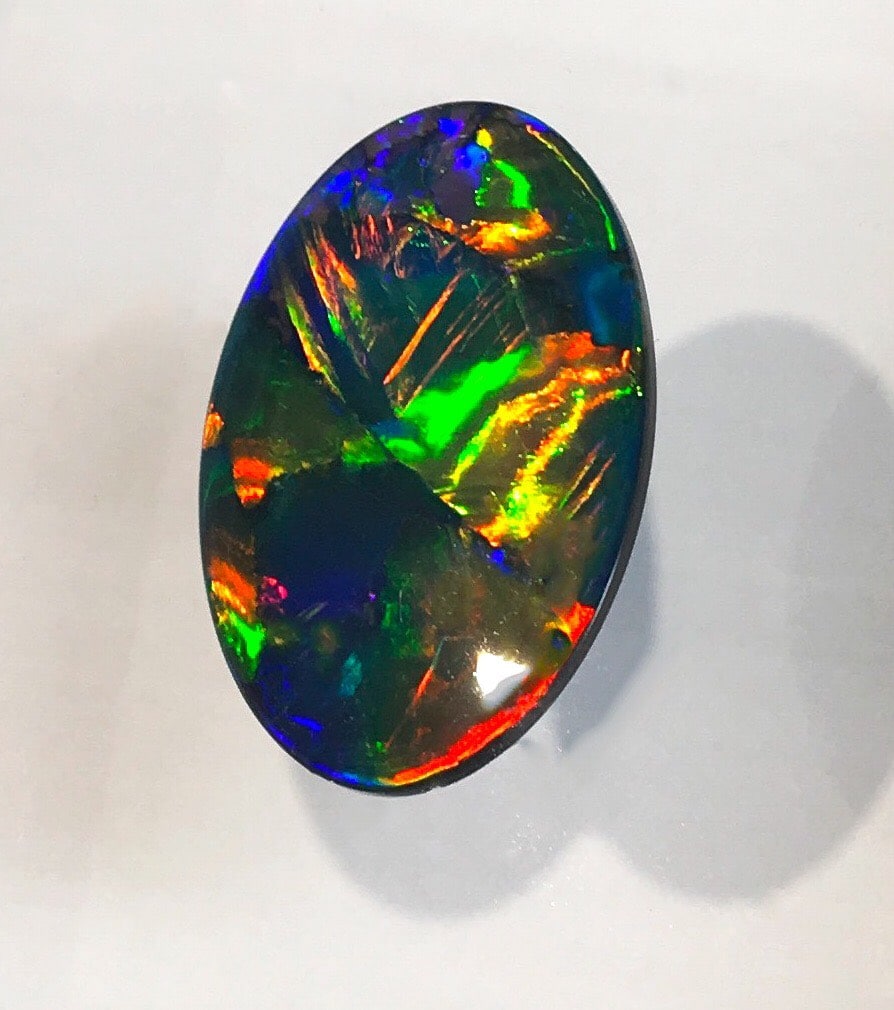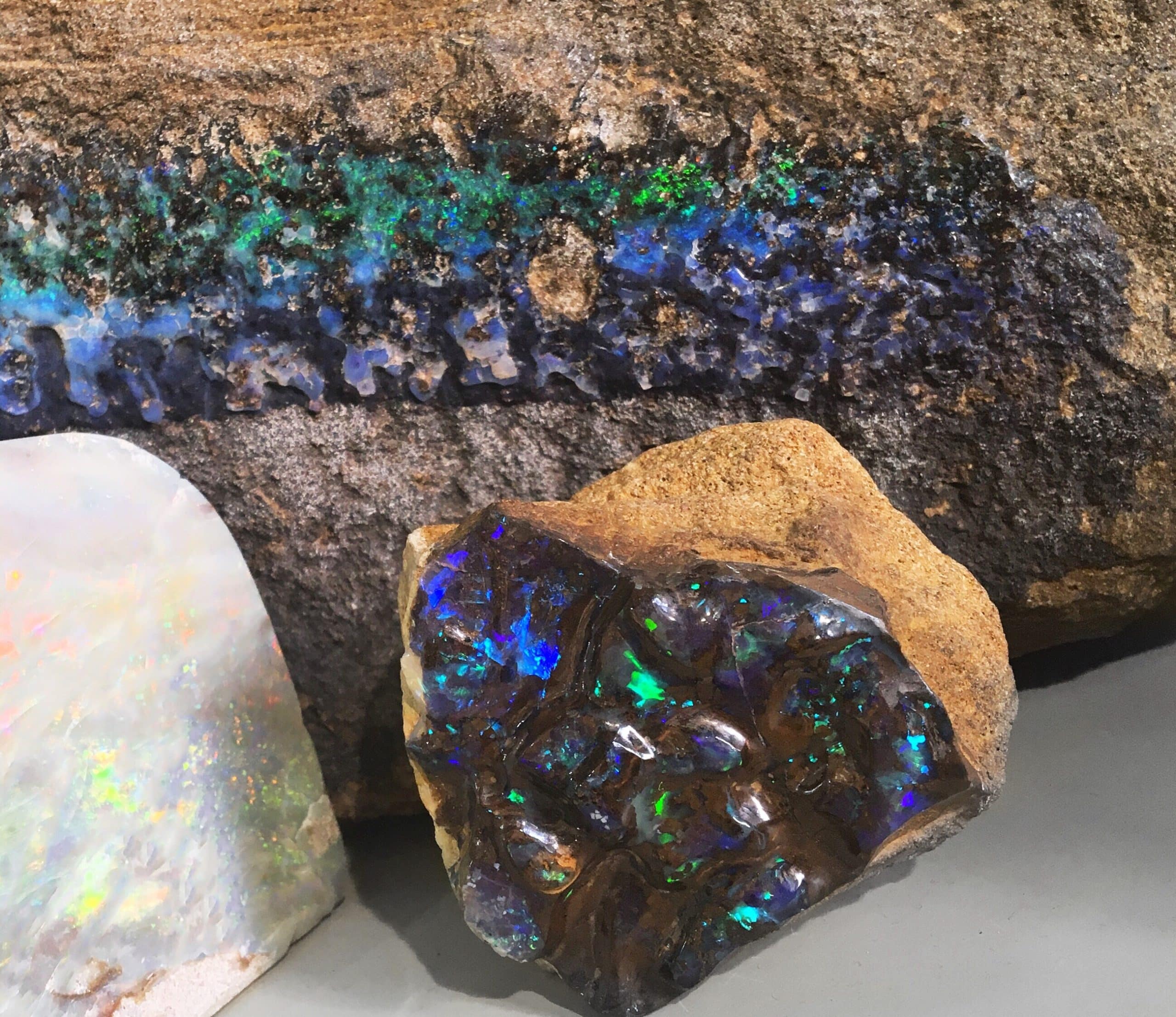Blog
“There is in them a softer fire than the ruby, there is the brilliant purple of the amethyst, and the sea green of the emerald – all shining together in incredible union. Some by their splendor rival the colors of the painters, others the flame of burning sulphur or of fire quickened by oil.”
– Pliny the Elder
Opals are one of the most mysterious and alluring stones in the world and, with over 90% of the world’s opals coming from Australia, could be considered our national gem. However, stories of this rainbow jewel have been around for thousands of years.
The Ancient Greeks believed opals transferred gifts of prophecy and protection from illness, while medieval Europeans thought the gem symbolised truth, purity and hope. Because the jewel was so rare, many cultures even thought it was created by the gods, with Arabic legends saying the stone fell from the heavens.
What is an opal?
On a chemical level, an opal is a combination of silicon dioxide and water. It’s also thought to be quite a “fluid” stone being composed with anything from 3-21% water. Unlike diamonds or rubies which are formed crystalline, opals are formed from balls or “lumps” of silica. These balls are the reason opals have their unique colour, with the silica balls acting like prisms and refracting light that hits the stone. Because of this, opals will have different colours and flashes of light depending on how the silica balls are spaced.
How are opals formed?
One of the most wondrous things about this beautiful stone is that to this day, scientists are still not 100% certain of how opals are formed. For example, popular theory suggests that silicon-filled water seeps through sandstone, filling in cavities and cracks. As the water evaporates, the opal is formed. On the other hand, others think that the process is reversed, with silica-laden water being pushed towards the surface of the earth and forming opals there.
Currently, the Australian Department for Planning and Environment suggests three different methods of opal formation.
- Weathering modelAccording to this theory, opals in Lightning Ridge take their silica from the constant weathering of sandstone in the area. As the sandstone dries out, acidity levels are increased, thereby releasing the silica. As the weathering continues, the acidity then begins to lower to the point where opals begin to form. This theory is supported by the Australian Journal of Earth Sciences, which states that opals are formed from “an extraordinary episode of acidic weathering, during the drying out of the central Australian landscape.”
- Syntectonic modelThis model, on the other hand, suggests that opals are formed when mineral-bearing waters rise towards the earth’s surface. Due to tectonic shifts in the earth’s plates, the water is forced into cracks and faults. After this, the water dissipates into lower-pressure areas and the opals are deposited as veins in these areas. In this theory, the opals are formed quite quickly.
- Microbe modelThe third model comes from German scientist, Dr. Hans-Jurgen Behr. According to Behr, opals are formed from a biological reaction caused by the combination of bacteria, enzymes and acids from the surrounding soil. In fact, although it is invisible to the naked eye, scientists have found microbe fossils in many opals from Lightning Ridge.
The mystery of how opals are formed might keep puzzling scientists for years to come but there is no doubt that these beautiful stones will be popular for many more years to come. Why not visit us in-store to explore our stunning range of opal jewellery today?


